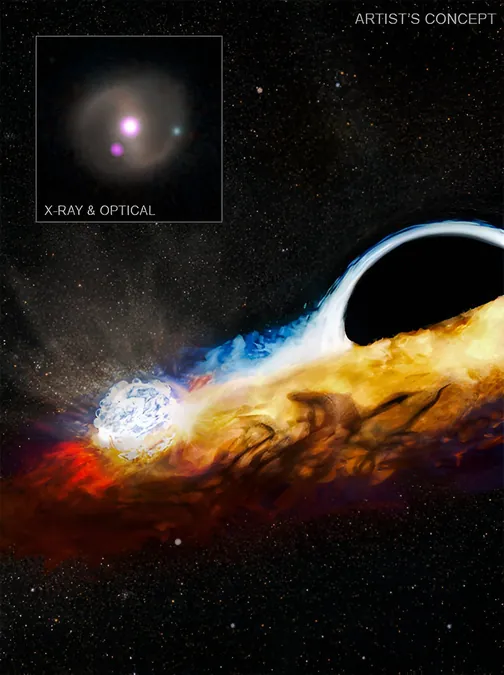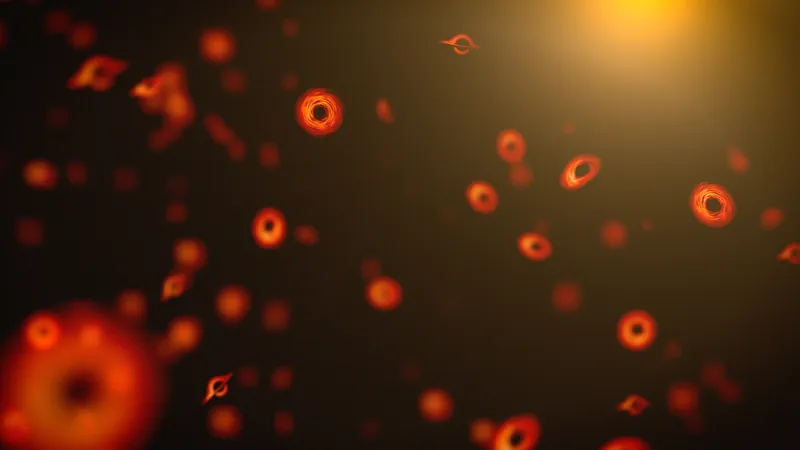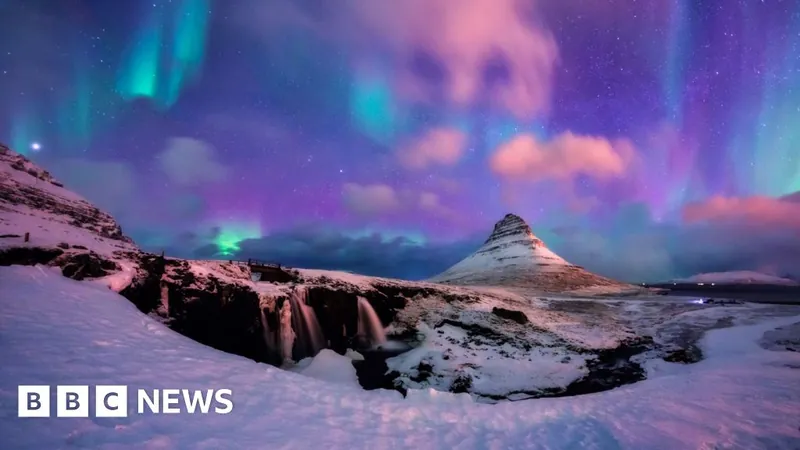
Massive Black Hole Unleashes Cosmic Chaos: Star-Shredding Spectacle Unveiled!
2024-10-09
Author: Benjamin
Massive Black Hole Unleashes Cosmic Chaos
An enormous black hole has made headlines by annihilating one star and now appears to be using its remains to bombard another star with intense energy, marking a significant breakthrough in our understanding of cosmic phenomena.
This incredible observation was made using a variety of powerful telescopes, including NASA's Chandra X-ray Observatory and Hubble Space Telescope, along with the Neutron Star Interior Composition Explorer (NICER) and the Neil Gehrels Swift Observatory. The findings have been published in the esteemed journal Nature, providing fresh insights into two previously enigmatic astrophysical occurrences.
A Dramatic Event Unfolds
In a dramatic event dating back to 2019, astronomers detected a star that ventured too close to a black hole and was subsequently torn apart by its gravitational grip. As the star disintegrated, its remnants formed a swirling disk around the black hole, akin to a graveyard for celestial bodies.
The Collision of Stars
Fast forward a few years, and this debris disk has expanded significantly, now encroaching on the orbit of another star—or perhaps a smaller black hole—that had previously been out of harm's way. This orbiting entity now collides with the debris disk approximately every 48 hours, producing spectacular bursts of X-rays that have been captured through sophisticated observations with Chandra.
A Splash in the Cosmic Pool
Matt Nicholl, the lead author of the study from Queen's University Belfast, likens the situation to a diver repeatedly entering a pool, creating large splashes each time. 'The star acts like the diver, while the disk represents the pool. Each collision generates a 'splash' of gas and X-rays that echoes across the universe,' he explains.
Connecting the Cosmic Dots
Previously, astronomers have cataloged numerous instances of objects tumbling towards black holes and experiencing a brief yet brilliant tidal disruption event—the sudden destruction by gravity leading to an outburst of light. However, recent findings reveal a different phenomenon involving a series of bright X-ray flashes known as “quasi-periodic eruptions,” which have puzzled scientists until now.
Co-author Dheeraj Pasham from the Massachusetts Institute of Technology expresses excitement over linking these two mysteries, stating, 'We now have definitive proof that these phenomena are interconnected. It’s akin to solving two cosmic puzzles at once!'
The Discovery of AT2019qiz
The tidal disruption event, designated AT2019qiz, was initially discovered by the Zwicky Transient Facility optical telescope in 2019. By 2023, both Chandra and Hubble had been employed to analyze the remnants of the disruption, revealing critical new information about the nature of these emissions.
Meticulous Observational Campaign
In a meticulous observational campaign, the Chandra data, amassed over 14 hours with varying signals, allowed researchers to hone in on the timing and intensity of X-ray bursts. The NICER telescope further confirmed that AT2019qiz erupts with regularity approximately every 48 hours. Complementary observations from the Swift Observatory and India’s AstroSat telescope solidified these findings.
Insights from Hubble's Ultraviolet Data
The ultraviolet data from Hubble illuminated the size of the disk surrounding the supermassive black hole and provided insight into the conditions under which these eruptions occur. Researchers determined that if any object orbited the black hole with a period of about a week or less, it would inevitably collide with the expansive disk, triggering explosive outbursts.
Significance of the Discovery
This discovery signals a significant advancement in our knowledge of astrophysical processes, according to Andrew Mummery from Oxford University. 'We’ve realized that we may have to wait years for eruptions to manifest after a star has been torn apart, as the disk needs time to expand and interact with other stellar bodies,' he notes.
Future Implications for Astronomy
The implications of this research are substantial. As astronomers search for more cases of quasi-periodic eruptions linked to tidal disruptions, they enhance our understanding of the prevalence and characteristics of objects locked in close orbits around supermassive black holes. Such findings could reveal excellent targets for future gravitational wave observatories and open new avenues in the quest to unearth the mysteries of the universe.
An Ongoing Quest
NASA's missions contribute to an ever-expanding global network dedicated to unraveling the enigmas of cosmic events, eagerly awaiting the next groundbreaking discovery in the depths of space. Stay tuned—who knows what astonishing revelations the universe has in store!









 Brasil (PT)
Brasil (PT)
 Canada (EN)
Canada (EN)
 Chile (ES)
Chile (ES)
 España (ES)
España (ES)
 France (FR)
France (FR)
 Hong Kong (EN)
Hong Kong (EN)
 Italia (IT)
Italia (IT)
 日本 (JA)
日本 (JA)
 Magyarország (HU)
Magyarország (HU)
 Norge (NO)
Norge (NO)
 Polska (PL)
Polska (PL)
 Schweiz (DE)
Schweiz (DE)
 Singapore (EN)
Singapore (EN)
 Sverige (SV)
Sverige (SV)
 Suomi (FI)
Suomi (FI)
 Türkiye (TR)
Türkiye (TR)